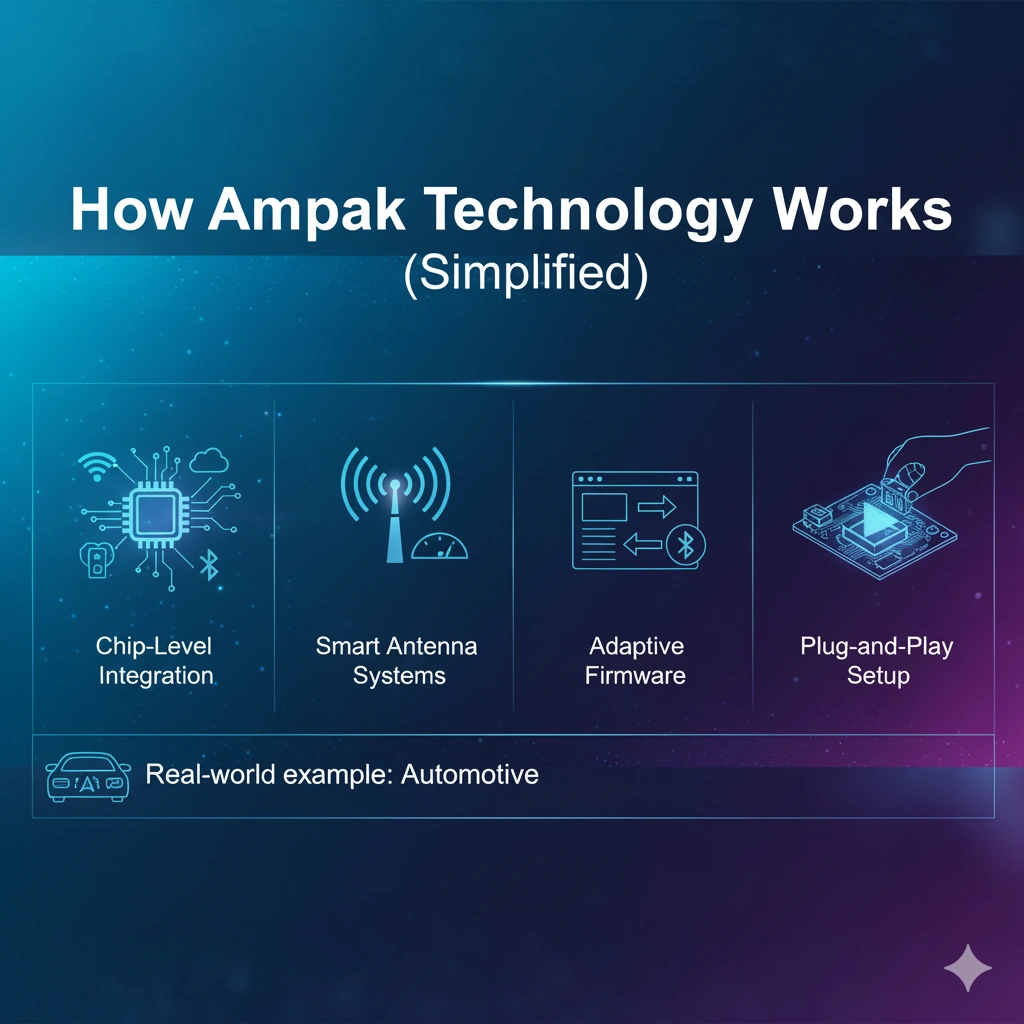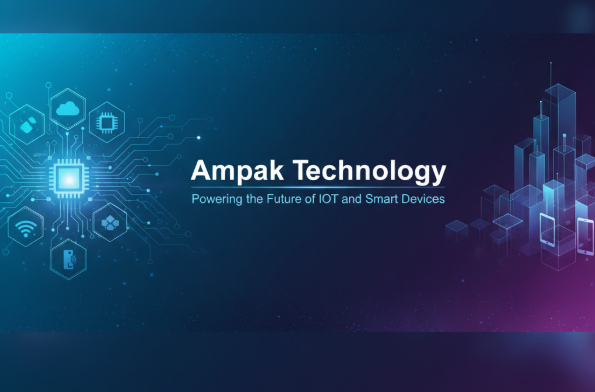Ampak Technology: Powering the Future of IoT and Smart Devices
Technology is moving fast, and every year devices are expected to be smaller, faster, and more efficient. Behind this progress are innovations that quietly make everything work better. One of those innovations is Ampak Technology — a solution that’s helping businesses and developers connect smart devices more reliably while keeping energy use low.
If you’re curious about what Ampak brings to the table, how it works, and whether it’s worth the investment, let’s break it down in simple terms.
What Exactly Is Ampak Technology?
At its core, Ampak Technology is about creating compact modules that combine multiple wireless communication standards into a single system-on-chip (SoC).
Instead of using separate chips for Wi-Fi, Bluetooth, or other IoT functions, Ampak integrates them into one tiny package. That’s why it’s becoming a go-to choice for industries building everything from smart home gadgets and wearable health trackers to industrial automation systems.
These modules are:
- Energy-efficient → designed to extend battery life.
- Space-saving → perfect for sleek, compact devices.
- Versatile → capable of handling multiple wireless protocols at once.
In short, it’s not just another connectivity tool — it’s a bridge that makes the Internet of Things (IoT) smoother and more scalable.
Why Businesses Are Turning to Ampak
So, why should a company consider using Ampak modules instead of traditional solutions? Here are the standout reasons:
- Reliable IoT Connectivity
Ampak helps devices “talk” to each other seamlessly, which is crucial for IoT ecosystems that rely on constant communication. - Compact Design Without Compromise
Smaller gadgets like smartwatches, fitness bands, and car infotainment systems need tiny yet powerful components. Ampak checks that box. - Energy Savings
Nobody likes recharging batteries every few hours. Ampak modules are optimized for low power consumption, giving end-users longer usage times. - Scalability for Growth
Whether you’re building consumer products or industrial networks, Ampak modules adapt to projects of different sizes — making it easier to scale up.
How Ampak Technology Works (Simplified)

You don’t need to be an engineer to get the big picture. Here’s how it all comes together:
- Chip-Level Integration: Each module combines Wi-Fi, Bluetooth, and other protocols into one chip, reducing clutter and boosting performance.
- Smart Antenna Systems: Built-in antennas improve range and cut down interference.
- Adaptive Firmware: Software inside the module automatically switches between modes — for example, using Wi-Fi for heavy data tasks and Bluetooth for lighter connections.
- Plug-and-Play Setup: Many Ampak modules are ready to drop into hardware designs with minimal effort, speeding up product launches.
Real-world example: In the automotive industry, Ampak modules are used for infotainment systems, wireless diagnostics, and even keyless entry. That’s everyday convenience powered by invisible tech.
The Pros and Cons
Like any technology, Ampak comes with both advantages and challenges.
Pros:
- High integration for compact devices
- Efficient power usage
- Support for multiple standards (Wi-Fi, Bluetooth, BLE, etc.)
- Easy integration for manufacturers
- Scalable for both small and large projects
Cons: - Higher upfront cost due to advanced design
- Risk of becoming outdated as wireless standards evolve
- Heat management can be a concern in performance-heavy devices
Key Considerations Before Adopting Ampak
If you’re a business thinking about using Ampak modules, here are a few things to evaluate first:
- Compatibility → Will it work smoothly with your existing systems and software?
- Budget → While powerful, these modules can be pricey, so factor in both initial investment and long-term ROI.
- Scalability Needs → Planning to expand into more IoT applications? Ampak’s versatility could be a major advantage.
- Environment → Harsh conditions may require extra engineering for reliability.
- Support & Maintenance → Ensure your team (or your supplier) has the expertise to handle troubleshooting and updates.
Conclusion
Ampak Technology isn’t just another trend — it’s shaping the way IoT and smart devices connect, perform, and scale. While cost and evolving standards are valid concerns, the benefits in energy efficiency, compact design, and reliable connectivity often outweigh the drawbacks.
For companies that want to stay ahead in the IoT race, investing in Ampak Technology can be a game-changing decision.
After all, in a world where “connected” is the new normal, having technology that makes connections seamless is not just helpful — it’s essential.
FAQs
Q1: What is Ampak Technology used for?
Ampak Technology is used to integrate Wi-Fi, Bluetooth, and other wireless standards into compact modules, powering IoT and smart devices with reliable connectivity.
Q2: Why is Ampak Technology important for IoT devices?
It ensures seamless communication, reduces power consumption, and enables smaller device designs, making it essential for modern IoT ecosystems.
Q3: Is Ampak Technology energy efficient?
Yes, Ampak modules are designed to minimize power usage, which extends battery life without sacrificing performance.
Q4: What industries benefit most from Ampak Technology?
Industries such as consumer electronics, automotive, healthcare wearables, and industrial IoT benefit from its scalable and versatile modules.
Q5: What are the drawbacks of using Ampak Technology?
The main challenges include higher upfront costs, potential heat management issues in high-performance devices, and reliance on evolving wireless standards.







